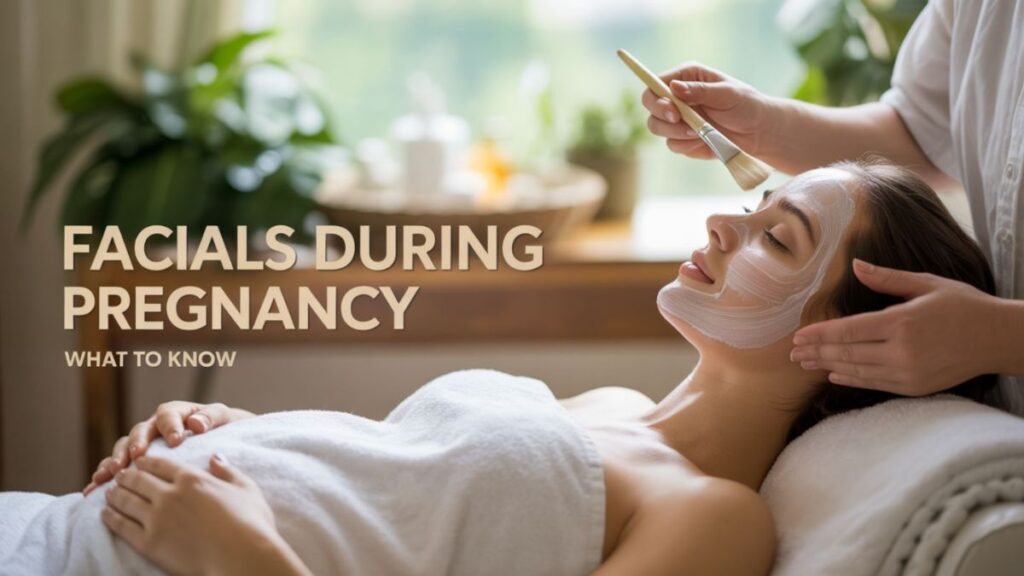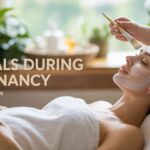Pregnant women often ask if facials are safe during pregnancy. Skin changes fast in this time. Some women see acne. Some see dryness or dark patches. A facial can help calm the skin. It can freshen the face. It can also support skin health with gentle care.
Many dermatology researchers report that mild facials are safe for pregnant women. Studies have shown that hydration facials, enzyme facials, and gentle masks are effective. Analysts also note that strong peels, retinoids, and harsh tools increase risk. Medical scholars advise women to pick simple treatments and skip aggressive methods. Previous studies have linked safety to low-strength products and the use of trained skincare experts.
So, the smart move starts with one choice. Pick a facial that feels gentle, calm, and safe. Your skin wants comfort in this stage. Give it steady care. Let soft products do the work. Let skilled hands guide the treatment. A simple facial can lift your mood and bring a glow. It can turn a normal day into a small, refreshing moment.
Why caution matters
Pregnancy changes skin sensitivity. Blood flow rises. The immune system shifts. These changes make infection or irritation more likely from aggressive treatments. Some skincare ingredients can enter the bloodstream. That entry can affect the developing baby. Use caution. Ask a medical professional when unsure.
Safe facial choices
Gentle cleansing and moisturizing work well. Look for facials that focus on calming and hydration. Treatments labeled “pregnancy facial,” “hydrating facial,” or “gentle facial” usually use safe steps. Common safe elements include a mild cleanser, light exfoliation with fruit enzymes, hydrating masks, and soothing serums such as hyaluronic acid or niacinamide. Many aestheticians use oxygen facials or LED light therapy. These options carry low risk when done properly.
Ingredients and procedures to avoid
Avoid these during pregnancy:
- Retinoids and retinol products. These act like vitamin A. High doses can harm the fetus.
- Strong chemical peels with high-dose salicylic acid or phenol. Some peels increase absorption into the body.
- Microdermabrasion and aggressive mechanical exfoliation. These cause irritation and broken skin. Broken skin raises infection risk.
- Botox and dermal fillers. These injectables remain off-limits. Studies lack safety proof.
- Laser treatments and intense light therapy that target pigmentation or resurfacing. These treatments can heat tissue or increase sensitivity. Wait until after birth.
Common active ingredients: what to keep or drop
Keep:
- Azelaic acid. Doctors often clear it for pregnancy acne. It works on redness and pigment.
- Topical antibiotics such as erythromycin or clindamycin. Studies call them safe when needed.
- Hyaluronic acid. This hydrator stays on the skin surface. It suits most skin types.
Avoid or use with caution:
- High-dose salicylic acid peels. Low-concentration topical use may appear safe, yet evidence remains limited. Choose milder acids like lactic acid instead.
- Essential oils in high amounts. Some oils can affect hormones or cause reactions. Keep scents light or skip them.
How to choose a spa or aesthetician
Pick licensed professionals. Ask if they know pregnancy-safe protocols. Confirm they avoid restricted ingredients and aggressive devices for pregnant clients. Request to use products made for sensitive skin. Show your prenatal records or mention any medical concerns. If a provider hesitates or gives unclear answers, leave. Your safety matters more than convenience.
Timing and pregnancy stage
Many spas accept clients after the first trimester. Some prefer to wait until after week 12. This timing lowers certain risks. Still, some simple facials work at any stage when a doctor approves. For treatments near the belly or back, ask about positioning. Use side-lying positions for comfort in later months.
At-home facial care during pregnancy
You can care for your skin at home safely. Use a gentle cleanser twice daily. Apply a fragrance-free moisturiser. Spot-treat acne with azelaic acid or doctor-approved topical antibiotics. Wear a mineral sunscreen each morning. Read product labels for retinol, hydroquinone, and high-dose salicylic acid; skip those ingredients. If you use a new product, test a small area first.
Risks and warning signs
Stop any treatment that causes intense burning, swelling, or open skin. Seek medical help for signs of infection, such as spreading redness, fever, or pus. Also seek care for unusual pain. Keep emergency numbers handy when visiting a spa. These situations need prompt attention to protect the mother and baby.
Tools and skincare products to bring up with your provider
Tell the aesthetician about:
- All current skincare products. List active ingredients.
- Any prescriptions you take. Include topical drugs.
- Allergies or previous skin reactions.
These details let the provider choose the right treatment plan. Avoid surprises.
Final checklist before booking a facial
- Ask your obstetrician if any treatment suits your health.
- Confirm the spa uses pregnancy-safe products.
- Avoid injectables, strong peels, microdermabrasion, and lasers.
- Choose gentle hydration, light enzyme exfoliation, or oxygen therapy.
- Leave if a treatment causes severe pain or broken skin.
Conclusion
A facial can feel like a small gift during pregnancy. Choose calm, not dramatic. Pick gentle steps that soothe the skin. Ask your doctor and tell the spa about the pregnancy. Simple choices protect you and the baby. You deserve care that keeps both safe while you enjoy a moment of calm.







